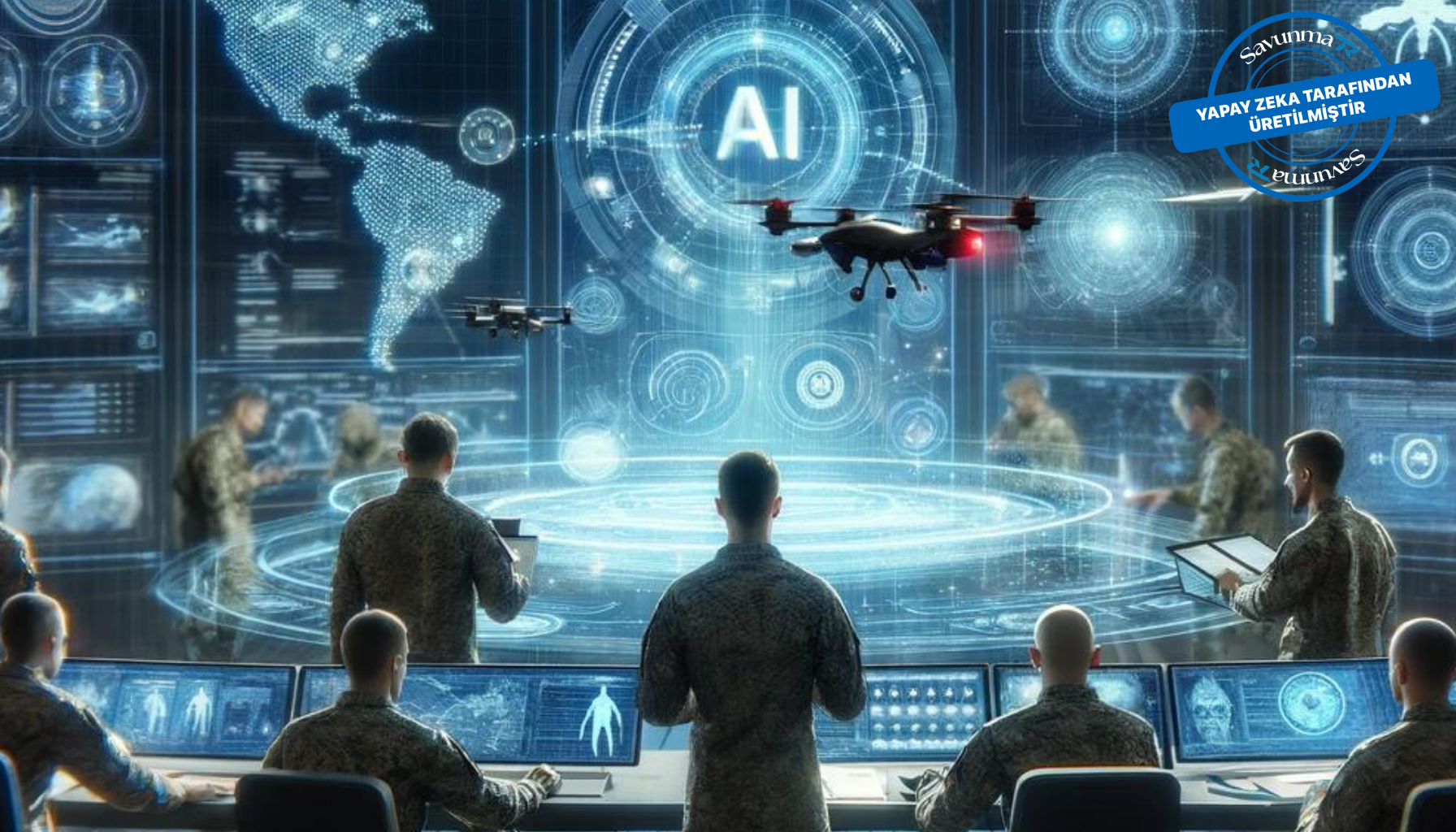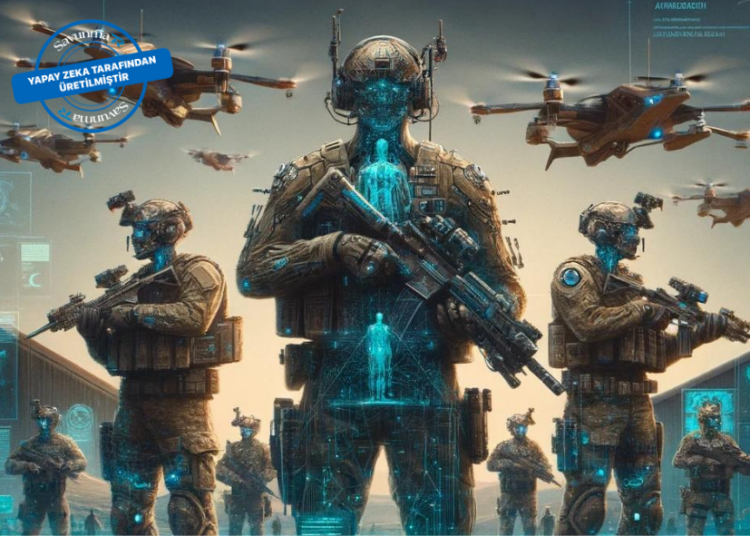OPERATION CODE: ENHANCED HUMAN SOLDIERS
The Importance of Enhanced Human Capabilities in Military Contexts
Superior capabilities of military personnel have always been a primary source for achieving set objectives. Under the harsh conditions of battlefields and border areas, soldiers need to possess not only physical capabilities such as high endurance, strength, and speed but also social skills like leadership, teamwork, and crisis management. Maintaining psychological resilience is also a fundamental condition in this process.
According to a Washington Post article from April 1988, which was further accessed by the CIA in 2000, the U.S. Army’s interest in endorphins, meditation, paranormal phenomena, and other extraordinary performance enhancement methods is not new. The Army has conducted various tests on extrasensory perception (ESP). The publication also indicated concerns within military and intelligence circles about the Soviet Union’s progress in developing psychic abilities. It was noted that “the Russians could influence others’ behavior, alter emotions or health, and incapacitate or kill people through mental telepathy.” Moreover, some Western researchers in the field of psychic phenomena were concerned about the potential harmful effects of subliminal perception techniques (subliminal messages, television signals, or telepathic methods) on U.S. or allied personnel in nuclear facilities. [1]
While the potential activities of security forces in the psychic realm are a separate area of research, the parallels with contemporary contexts are quite intriguing:
- Security forces need to acquire new capabilities to gain superiority.
- Activities of rival elements in areas considered to have critical impacts may require manipulative expressions to address concerning levels of threat.
Today, artificial intelligence determines security strategies under entirely similar conditions. Of course, this process, as seen in past examples, involves many conscious and unconscious variables.
U.S. military official Troy Denomy, speaking at SXSW 2024, mentioned that early on, leaders in the army would say, “Hey Troy, I want AI… do AI things for me.” Denomy emphasized that significant learning had occurred in the army regarding this, stating, “AI is not a cure-all; it is a tool.” [2]
Without clear determination of its purpose and fundamental priorities, AI cannot go beyond being just a new expenditure item. To operate based on this principle, it is crucial to accurately interpret the transformation and assess the power and scope of potential impacts.

The Role of Augmented Humanity in Modern Warfare
As the battlefield becomes increasingly unmanned, the human element remains a crucial factor in the complex and dynamic environment of war and peace. Artificial intelligence, which accelerates the unmanning of the battlefield with its capabilities in military assets like air defense platforms and unmanned land-air-sea systems, also enhances human capabilities.
This is where “augmented humanity” comes into play. According to a May 2021 report titled “Human Augmentation – The Dawn of a New Paradigm” published by the UK Ministry of Defence, it is a paradox that the human at the heart of warfare is often the weakest link. Regardless of their role (drone pilot, infantry, cybersecurity specialist, etc.), security forces are expected to be more powerful, faster, smarter, more resilient, and mobile to overcome enemies and their environment. The Ministry emphasizes that they are designing technologies that “increase lethality, survivability, and mobility.” According to the Ministry, as technology has become more sophisticated, scientists have focused more on machines than on humans, but this trend is beginning to change. [3]
How Can Augmented Human Soldiers Differentiate Themselves?
Physical Performance
- Increased strength, speed, and endurance
- Enhanced sensory functions and range
Psychological Performance
- Improved attention, alertness, and memory
- Enhanced perception and situational awareness
- Better decision-making
- More effective learning
Social Performance
- Improved communication
- Better group cohesion – stronger units
Health and Combat Readiness
- Enhanced health and well-being
- Faster recovery from injuries and wounds
- Improved resilience and determination [4]
According to Joel Mozer, Director of Science, Technology, and Research at the U.S. Space Force, who spoke in July 2021, Western civilization transitioned from an industrial-based society to an information-based society over the past century. Today, however, we are on the brink of the “human augmentation” era. To avoid falling behind strategic competitors, the U.S. must embrace this new era in its national defense activities. According to Mozer, technology can create “superhuman” abilities through the combination of human intelligence with machine efficiency, power, and speed. In the coming decade, we will reach new levels of human-machine collaboration and witness unprecedented new capabilities that were previously unimaginable. [5]

In December 2020, then-French Defense Minister Florence Parly emphasized that humanity has long sought ways to enhance physical or cognitive abilities to better cope with warfare. Parly noted that potential advancements might lead to the incorporation of capacity-enhancing features into soldiers’ bodies. [6]
According to a February 2021 report, France addresses the concept of “augmented soldiers” within the framework of ethical values and rejects technologies that could lead to changes in human genetics. However, the report also notes that this does not mean there is no interest in augmented soldiers. France is focusing on “Iron Man”-type augmented soldiers rather than “Spiderman”-type augmented soldiers. [7]
Considering the fictional developments in the Marvel universe, it can be said that the French are aiming to equip their soldiers with advanced capabilities similar to Iron Man, who has enhanced features through AI-supported armor, rather than Spiderman, whose genetics are altered by being bitten by a radioactive spider.
According to a report published by the U.S. Army in 2019, U.S. Department of Defense personnel should conduct a global assessment of societal awareness and perceptions regarding human/machine enhancement technologies. The report indicates that technologies viewed with ethical concerns by Americans might be more easily adopted by adversaries. However, it also notes that the attitudes of “enemies” toward these technologies have never been confirmed. Furthermore, societal concerns emerging after the introduction of new technologies could create unexpected political obstacles, potentially slowing the local adoption process regardless of its value or realistic risk. Evaluating global attitudes will help predict areas where socio-political barriers may make the adoption of new technologies difficult and where adversarial technologies might be more readily accepted. [8]
In the journey towards augmented humans, a global approach will determine the direction of technology. According to the report, the U.S. Department of Defense should invest in developing dynamic legal, security, and ethical frameworks to govern these technologies. Given the rapid development of these technologies in the U.S. and other countries (“allies and adversaries”), the frameworks are currently inadequate. Therefore, the Department should support forward-looking policies (both domestic and foreign) that maximize the defined benefits for the U.S. and its allies while maintaining security, protecting individual privacy, and managing personal and institutional risks. These frameworks should be structured to respond quickly and effectively to new technologies developed within or outside the U.S. [9]
Thus, ethics is one of the most powerful elements that can guide the development of technology beyond reputation, trust, and adherence to fundamental principles. In this regard, ethics has a significant impact on technology-related factors, such as investing in fundamental technologies, directing the private sector towards specific goals, detecting adversary doctrines, and ensuring the compatibility of potential augmented soldiers with allied doctrines. [10]
According to information released to the public at various times, the U.S. is interested in wearable exoskeleton systems to achieve objectives such as protecting soldiers’ safety, reducing physical injury risks, decreasing fatigue, and enhancing strength. For example, according to a 2018 article published by Lockheed Martin, the company secured $6.9 million in funding from the U.S. Army to develop an AI-supported exoskeleton system.
DARPA aims to develop high-performance, bidirectional brain-computer interfaces. It is considered that this could enable various national security applications, such as controlling unmanned aerial vehicles, active cyber defense systems, or successfully multitasking during complex military operations through collaboration with computer systems. According to DARPA, the system will be non-invasive and portable by humans. [11]
According to information released in 2020, DARPA is working on making soldiers resilient to common health issues such as limited access to safe food and water, and sleep disorders. DARPA aims to address this need through devices implanted under the skin or ingested and retained in the intestines. [12]
Another program run by DARPA focuses on addressing issues such as opioid overdose (dangerous levels of opioid medications used as painkillers or narcotics), organophosphate poisoning (poisoning resulting from exposure to organophosphate chemicals like those in pesticides), exposure to gamma rays, and influenza infections. The program aims to develop countermeasures without making permanent changes to the genome. However, unofficial evaluations suggest that, while theoretically possible, permanent modifications could offer soldiers new features beyond current scientific knowledge, such as expanding auditory range or providing night vision by adding genes from animals. [13]
The U.S. government’s high expectations for technological contributions cause similar “concern” among competitors regarding their activities in the field.
In 2020, then U.S. Director of National Intelligence John Ratcliffe stated that the Chinese government intended to achieve dominance over the U.S. and the rest of the planet economically, militarily, and technologically. According to information from U.S. intelligence, Ratcliffe reported that China was conducting human tests on soldiers with the goal of developing biologically advanced capabilities. [14]
In an analysis published in 2023 by the Mad Scientist Laboratory, a community supported by the U.S. Army, it was claimed that China’s Civil-Military Fusion national strategy includes gene editing efforts aimed at creating specific traits in Chinese soldiers, such as reptilian night vision or high intelligence. [15]
The technological competition between the U.S. and China can result in U.S. authorities attaching greater significance to Chinese activities. However, it is noteworthy that scientist He Jiankui, who was tried for “illegal use of medicine” for altering the genes of twin babies, received only a 3-year prison sentence and a 3 million yuan (approximately $430,000) fine. [16] In 2024, He Jiankui stated that he takes “pride” in his intervention that led to his arrest. He Jiankui claimed that the twins, who he says are immune to HIV, had no medical changes made to their genes other than for the intended purpose. [17]

Advancements in artificial intelligence, brain-computer interfaces, and biology are blurring the line between the normal and the artificial, disrupting the “normal perception” of what is considered natural.
In a 2019 assessment, Qi Jianguo, former Vice Chairman of the Joint Chiefs of Staff of China, noted that in the mechanical warfare era, “air superiority,” “naval superiority,” and “electromagnetic dominance” dominated the battlefield, while in the information age, “information dominance,” “brain dominance,” and “intelligence dominance” would prevail. According to Qi Jianguo, it is crucial to avoid thinking that artificial intelligence can “do everything,” remain strategically vigilant, and approach military applications of AI from a scientific perspective. Scientifically, it is necessary to better address what AI can do at different stages of its development, how extensively it can perform tasks, and what can be achieved in areas requiring deep integration between human and artificial intelligence. [18]
According to open-source information, the National University of Defense Technology (NUDT) affiliated with the Chinese military has been working on brain-computer interfaces for over twenty years. According to Hu Dewen, who leads the program: “The combination of high functionality in machines with high intelligence in humans is an important application area for achieving high system performance.” Similarly, research on controlling drones and robots through brain interfaces is being conducted at the Information Engineering University, also affiliated with the Chinese military. [19]
According to a report from PLA Daily (a Chinese military press agency), Chinese sources have stated that “war has shifted from the pursuit of destroying bodies to paralyzing and controlling the opponent.” As such, the brain has become a primary target in new weapon concepts for both attack and defense. This includes potential capabilities such as “brain control weapons.” [20]
China’s approach to augmented humanity in ethical terms may differ from the Western approach. Under current conditions of free thought, the West has to contend more intensively with negative perceptions and societal pressures influenced by dystopian narratives in the art world. However, China is not a technology development region isolated from regulations. For instance, in February 2024, China published guidelines outlining ethical principles for brain-computer interfaces. According to the guidelines, participants in brain-computer interface research should have their rights to information and personal dignity respected, their decision-making autonomy maintained, and the highest possible degree of integrity in the brain’s structure, functional, and mental consciousness preserved. Research on brain-computer interfaces should fully evaluate risks and benefits, and studies involving neural development in children and adolescents should adopt stricter ethical assessments, scrutiny, and risk prevention measures. [21]
In an era where technology increasingly resembles science fiction realities, understanding potential changes in military capabilities and perspectives on this issue is crucial for survival. However, it is important to recognize that current motivations, whether aimed at enhancing soldiers’ performance through different diets as in the 5th century BCE or through psychic abilities under limited technological capabilities in the 20th century, are not fundamentally different.
Even if groundbreaking advancements in the capabilities mentioned above were achieved, soldiers would not be rid of fear for the first time in history. Military units desensitized to fear through various stimuli have repeatedly appeared on the battlefield throughout history.
Moreover, an important consideration is not to perceive contemporary technologies as miraculous entities that solve all military and civilian problems or always provide the best response, despite the potentially surprising results. Assigning meanings to technology beyond its current and potential capabilities could fundamentally create a technology bubble contrary to the intended goals.
To define our expectations of technology and achieve results in this regard, we must first accurately identify our problems. This principle also applies to new and striking military realities, such as augmented human soldiers.
Source: Harekat Kodu: Artırılmış İnsan Askerler – SavunmaTR

